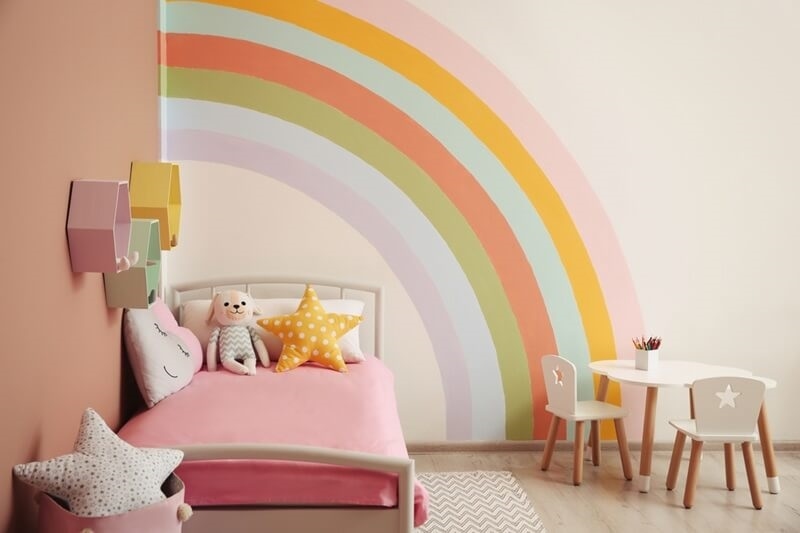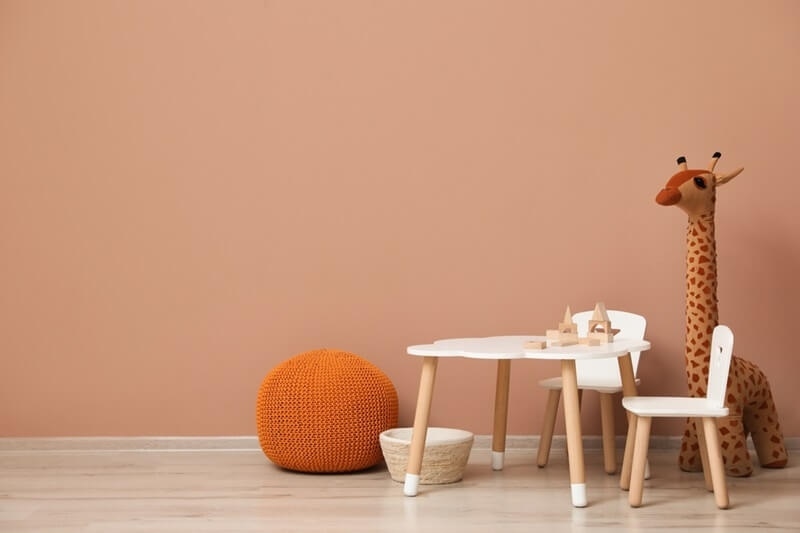
Among the most important things concerning parents is creating a safe space for their children to live and play. Curiosity and play are a natural part of kids’ lives, and furniture that looks harmless is sometimes the reason for big catastrophes in your household.
Selecting the most appropriate pieces for your home and knowing how to keep it safe can allow you to stay at ease and prevent accidents. This tutorial covers kids furniture safety tips and practical advice for families looking for safe furniture.
When choosing furniture for kids, safety should be the first consideration. Of course, style and look matter, but what is the point of having a stylish piece of furniture if it is hazardous? When searching for safe kids' furniture, look for non-toxic materials and smooth finishes, swiftly eliminating any furniture that has sharp edges, pieces that can come off, or furniture that could easily topple over.
Parents should carefully consider these specifications for safety:
By remembering these foundational details, parents can really help mitigate hazards in children's rooms.

Even the best furniture is not enough to fully assure safety if pieces are not properly secured. Families with toddlers should definitely install childproofing as a mandatory measure to ensure the safety of their kids. It simply consists of carrying out various kids furniture safety tips to avoid falling, getting stuck, or any other kind of injury.
Mounting tall pieces like bookshelves, dressers, and wardrobes on the wall using brackets or straps is the way to prevent them from tipping if a child ascends on them. Protect the corners of tables, desks, or nightstands with corner guards so that the little ones cannot hurt themselves on the sharp edges. Use drawer and cabinet locks to restrict children’s access to dangerous items. If the issue is drawers containing knives, scissors, or small objects, then locks are really the key solution.
Sleep is one of the main factors in children’s development, and picking the proper bed is certainly a big step towards that. While choosing the best kids beds, the kid’s age, height, and sleeping habits should be the points you think over most. Cribs with no drop-sides are the safest for babies, whereas the drop-side models have been banned due to safety issues. Low-profile beds for toddlers can lessen the danger of falls, while bunk beds have to be used with great caution, such as having a guardrail and no climbing on the other side.
Be sure that the bed for a child at night is equipped with safety rails on at least one side. Stay away from beds that have wide openings or gaps large enough for a child to fit their arms or legs into. You want the mattress to fit snugly in the bed frame, to reduce the hazard of a child getting caught. Pay attention to the bed frame material. A solid wood or metal frame is going to be safer and more reliable than a lightweight or rickety frame.
The bedroom is the child’s personal space, and it usually has several furniture items in it. Buying the right pieces is not only a way to avoid accidents but also to create a space that is perfect for resting and playing. When selecting children’s bedroom furniture, one should focus on these three aspects: function, safety, and convenience.
The use of storage as part of the room’s décor, along with ergonomically designed furniture, contributes greatly to keeping the bedroom free from disorders and reducing the risk of accidents.
They’re at the stage where movement and exploration are their forte, and selecting furniture thus becomes very crucial. A convenient toddler furniture guide is a must-have for parents to meet the requirements that are specific to the different stages of the child’s life. Furniture for toddlers has to be made up of items that are low to the ground, fun, and safe to use.
Low chairs and tables not only prevent accidents but also allow children to utilize the furniture on their own. to keep your little ones safe with rounded or padded edges that protect them from even the minor bumps and bruises. Using multi-functional furniture like bed with storage drawers or modular shelves can be the best way to maximize space and get the most out of your child's furniture as he/she grows.
What is quite astonishing is that the cause of most furniture-related accidents is the easily overlooked hazards that are hiding in the furniture itself. Parents who consider potential risks will always have the upper hand in making safer choices.
Some of the common ones are tip-over accidents caused by tall, unanchored dressers and bookshelves, choking that small detachable knobs or decorative pieces may cause, pinching the little fingers of kids that happen while using drawers, doors, or foldable furniture, and toxic materials that appear in paints, finishes, or fabrics.
Non-accidental piece of furniture is just a part of the safe furniture equation. First, regular maintenance and are quite as significant as monitoring when it comes to a continuous safety program. The problem is, over time, screws can loosen up, finishes may deteriorate, and furniture can become unsteady.
Find and fix loose screws, nails, or bolts quickly as part of your regular maintenance. Check for signs of furniture damage like cracks, splinters, or paint chips, and take care of the issue by either fixing or changing the product. Part of safety is also keeping all moving parts in good working order. So, make sure that the operation steps for drawers and doors run smoothly.
Each room of a house has different considerations concerning furniture safety. In playrooms, safety is less of a concern if there are low shelves and soft mats. Living spaces, in turn, can be both safe and comfortable if they are furnished with sturdy chairs and tables that have rounded edges to protect your little ones from bumps and scratches during daily activities.
High chairs in kitchens and dining areas also have to be according to the latest standards and have reliable harnesses to hold the baby in place as he or she eats. Planning ahead will let you create a beautiful and safe home for your children to grow up in.
Choosing the appropriate furniture for children relates to safety, function, versatility, and longevity, and is far beyond style and comfort. From adding age-appropriate kids' furniture to the home to adding features that promote safety for children, every choice counts towards prioritized efforts for a safe home.
Children will learn early education through exploration, play, and rest, only when all solutions are developmentally and age-appropriate, placement is practical, and maintenance occurs regularly. What is done right today will assist homes and children's lives to be safe and happy moving forward.
This content was created by AI